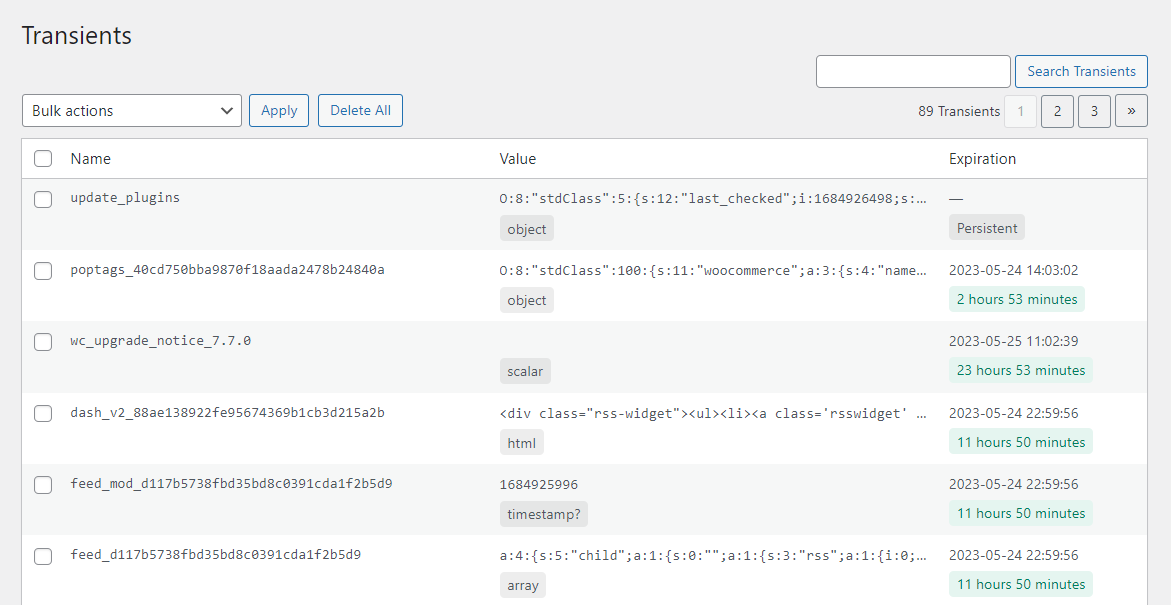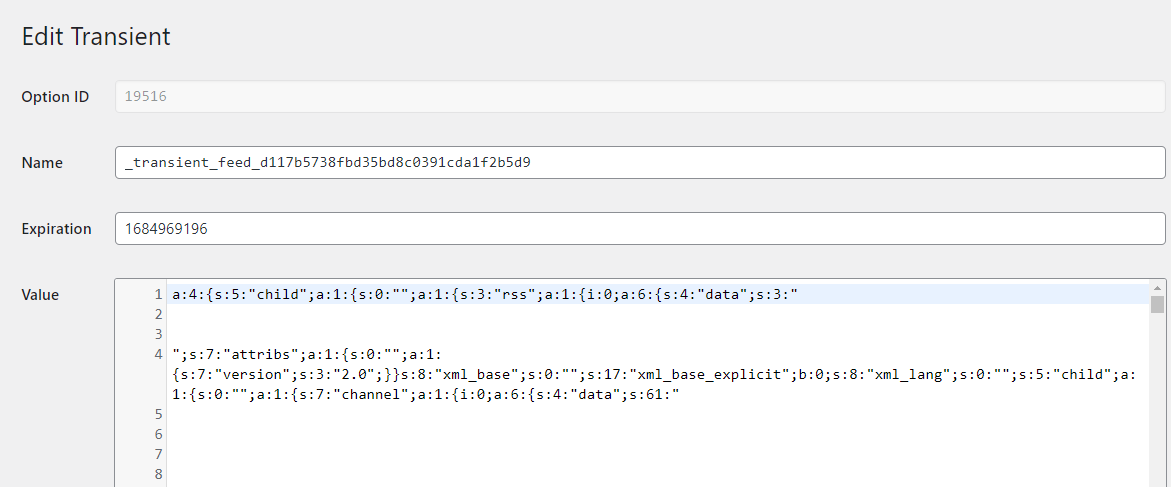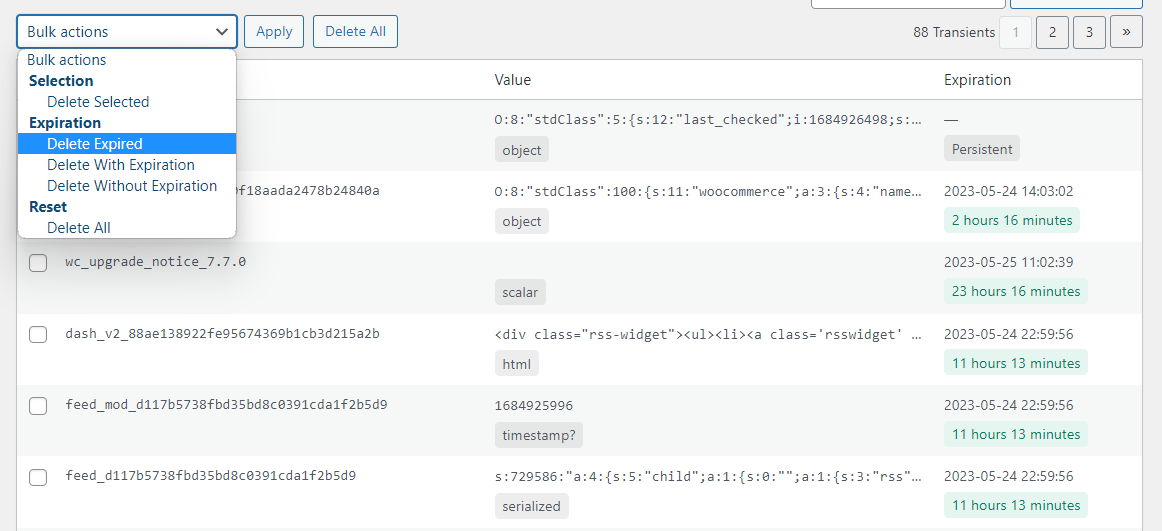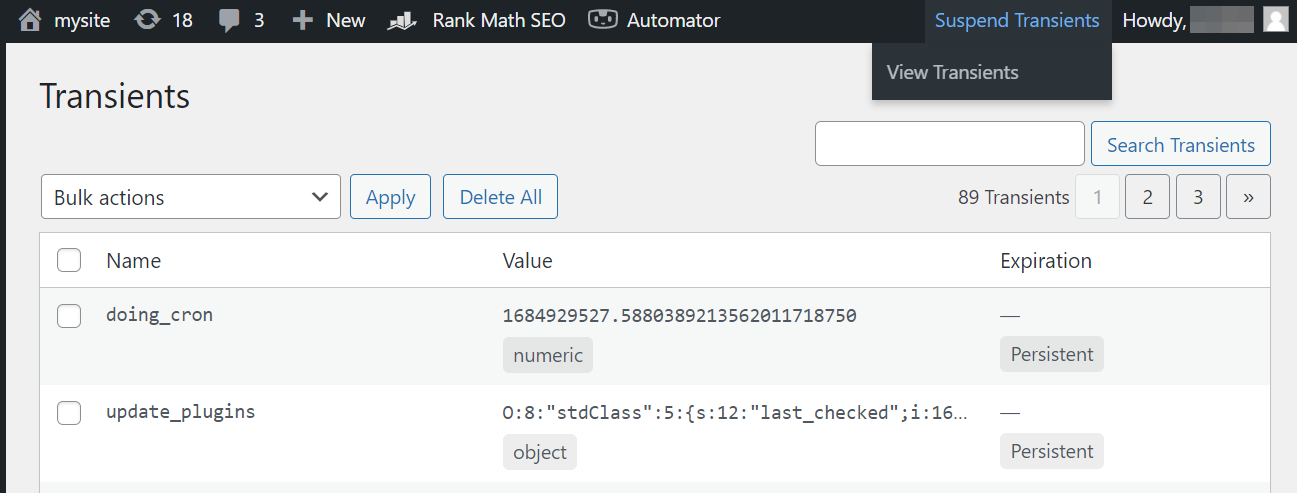WordPress transients are intended to assist improve a site’s performance. 📈 Nevertheless, comprehension how they get the job done and how to control them can be a very little tough.
To enable you out, we have set together a speedy guide to WordPress transients. Once you have a great grasp of the basics, you can get started utilizing them on your very own web page or world wide web advancement projects. Additionally, understanding how to take care of WordPress transients can pace up your loading moments.
In this post, we’ll acquire a nearer glimpse at 🔎 WordPress transients and how they operate. We’ll also focus on the positive aspects of working with them on your web site. Eventually, we’ll show you a number of successful approaches to take care of transients in WordPress. Let’s get started!
📚 Table of contents:
What are WordPress transients?
In advance of we dive into the ins and outs of WordPress transients, let’s have a brief glance at two connected ideas: caching and Application Overall performance Interfaces (APIs).
Caching in WordPress requires saving your website’s details in a temporary cache. This way, the internet site will not have to re-run requests for the same info when a user visits it. Instead, it will use the cached info, lowering loading occasions.
In the meantime, API is a technique that allows two different platforms to converse with just about every other. For case in point, if you order an e mail marketing tool, you will probably have to have to enter its API vital into your WordPress web page so that it can start out recording subscriptions and sort submissions:

Now, you may possibly be wondering how WordPress transients suit into all of this. Very well, some plugin builders use transients to keep short term info in the WordPress database.
This is incredibly popular with equipment that use an API to pull details from an additional system. Let us say you have a social media plugin that displays the variety of shares on your posts.
When a consumer visits a put up, your server will require to link to your social media web pages to fetch these numbers. As you can possibly tell, this method can sluggish down your web site.
Nevertheless, if the plugin utilizes a transient, this info will very likely be stored in your WordPress databases. This suggests the server will not require to talk with the social media platforms – it can just retrieve the cached details and provide your content speedier.
We’ll consider a closer search at the advantages of working with WordPress transients in the following segment. For now, let’s split down the principal parts of a transient.
How WordPress transients work
Transients work by storing details in the WordPress database using a vital-value pair composition. This key is utilised to determine the transient, while the benefit specifies the information that’s staying saved.
On top of that, some developers set an expiration time for the transient. Soon after this date, the facts will develop into invalid and would will need to be fetched again.
Utilizing the similar example as above, a social media plugin could only keep the share rely particulars for two or 3 months. Soon after this period, it will regenerate the details so that the number of shares is up to date.
👉 In essence, every transient is created up of three elements:
- $transient: this is the critical that identifies the transient (usually a title).
- $price: this is the facts that’s staying retrieved by way of an API.
- $expiration: this specifies how long the knowledge will be stored in the database right before it’s deleted and requires to be fetched via the API all over again.
To established the transient, you’d require to use the set_transient() function. So, here’s what the remaining final result would search like:
established_transient( 'special_question_results', $exclusive_query_outcomes, 12 * HOUR_IN_SECONDS )
⌛ That illustration is pulled from the formal WordPress Transients documentation [1]. We advise checking out that page for a total breakdown of transients (and how to use them).
The positive aspects of working with WordPress transients
As described before, WordPress transients can assistance improve site performance. A lot of developers use them to minimize the amount of external API phone calls.
If the server has to make several API requests to retrieve knowledge, it can direct to slower loading periods for your users. For instance, you might be applying a social media feed or exhibiting follower and share counts on your web-site. If the server has to hook up to these third-occasion platforms to fetch that data, it will consider extended for the content to load.
If this facts is stored in a non permanent cache in the databases, the info can be sent extra promptly. Consequently, when used effectively, transients can appreciably cut down loading periods and enable you produce a far better person expertise.
From a world-wide-web advancement point of view, transients aid straightforward data administration. For example, you can decide on which material you want to cache, and how very long you want to keep it for.
This can be especially beneficial if you have data that requires to be fetched by means of an API, but doesn’t change often. You can cache this articles so that it hundreds faster, and refresh it every number of months.
If your internet site displays info that wants to be updated in genuine-time, using transients may perhaps not be the very best system of motion. In some scenarios, you may possibly want to delete the transient so that the web-site displays the additional the latest info all the time. In the subsequent section, we’ll take a closer appear at taking care of your WordPress transients.
How to manage transients in WordPress
While you may need some programming knowledge to deal with WordPress transients, there are some plugins you can use that will simplify the method. You may well by now be applying an optimization software that features this attribute.
For instance, WP Rocket enables you to take out all transients from your site by examining a box. You also have the solution to delete expired transients only.
If you are hunting for a no cost instrument (or additional handle more than your transients), you could possibly want to look at out the Transients Supervisor plugin. This allows you to watch, edit, and delete all transients on your web site.
After you set up and activate the plugin, head to Tools > Transients. Right here, you will see a record of all the transients on your internet site:

To modify a transient, hover on it and pick out Edit. You can change the identify, benefit, and expiration time, using the appropriate fields:

The moment you are prepared, click on on Help you save Improvements.
When it will come to deleting transients, you have many options. For example, you can delete expired transients only, unexpired transients, or those people without the need of an expiration date:

In the top WordPress toolbar, you are going to see an choice to suspend transients (and unsuspend them):

This plugin can arrive in handy when tests new transients. It permits you to try out distinct transient values (knowledge to be cached) and see how it has an effect on your site’s general performance.
Summary 🧐
WordPress transients help you to store information that is normally fetched by way of an API in your database. This way, the server won’t need to hook up to third-party platforms to retrieve that details. Transients can for that reason raise loading situations and strengthen internet site functionality.
👉 For case in point, if you have a social media plugin, a transient can be applied to retail outlet information like share and follower counts. In addition, you can use a instrument like WP Rocket or Transients Supervisor to delete and modify transients.
Do you have any thoughts about WordPress transients? Let us know in the responses section underneath!